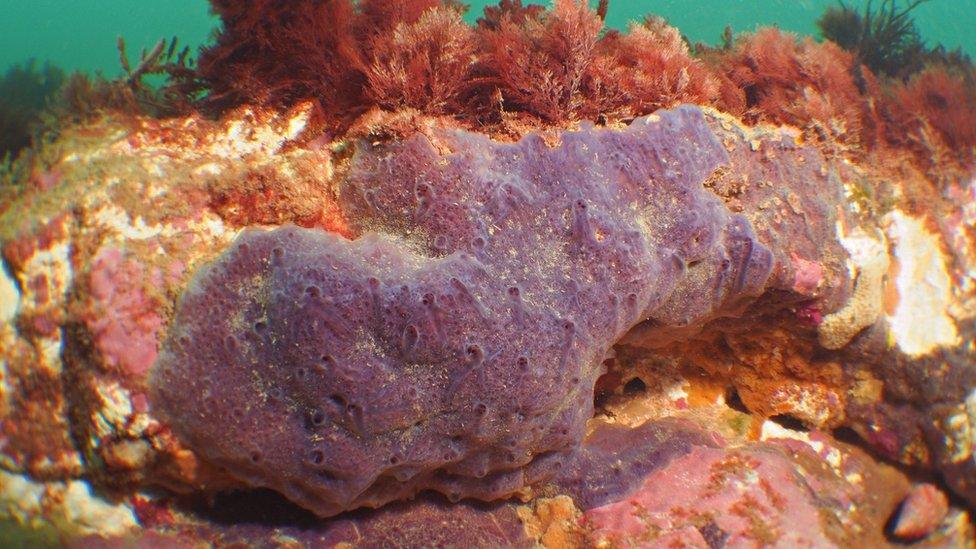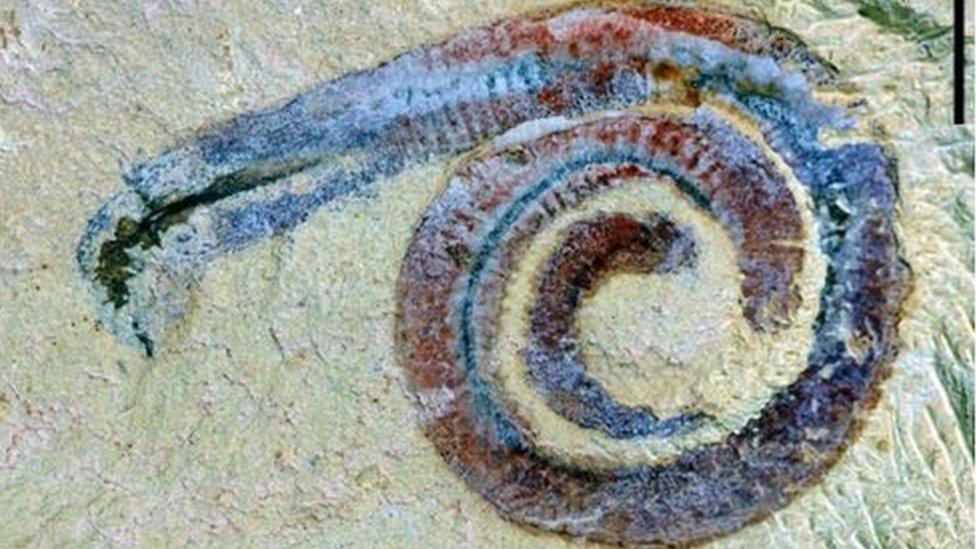Newly discovered sponge fossil could be sign of oldest animal life on Earth
- Published
- comments

An ancient sea sponge - a bit like this one - could be the oldest proof of early animal life
A fossil of a sponge found in north Canada suggests animal life began on Earth 350 million years before previously thought.
Sponges are living animals that live in the water. Think Sponge Bob, but unlike Sponge Bob, they are stuck to the floor in the oceans, sea, and rivers.
The wiggly, curved and twisted fossils are thought to be the remains of a type of sea sponge that could be the oldest known fossils ever discovered.
The fossils were found in rock layers that were pushed upwards to form the Mackenzie Mountains in northern Canada, but originally the rock had come from ancient underwater reefs that existed around 890 million years ago.
The more complicated animals had to wait a while.
Currently, the oldest known sponge fossils date to around 535 million years ago, and geologist Elizabeth Turner says that if the new fossil is indeed a sponge, "the material described here would represent the oldest fossil evidence of animals known to date."
Turner explained that when examined under a microscope, the 3D structures of the fossils are similar to natural bath sponges that can be bought today.
"Initially, when you look at these features they look like a bunch of wiggles, but when you try to follow each of the strands, you realise that even in thin sections they form complicated 3D meshworks," she said.
According to previous studies, sponges are some of the first animals to have lived on Earth, acting as a natural filter for Earth's waters for hundreds of millions of years - way before the time of the dinosaurs!
When did humans first discover dinosaurs?
Fossils are the remains or traces of plants and animals that lived a long time ago. They are usually formed from the hard parts - like shells or bones - of living things.
After a living thing died, layers of earth, sand and mud built up on top of it. Over time, these layers turned into rock.
Eventually, part or all of the living thing's hard parts also turned into rock. The fossil is the shape of these hard parts in the rock.
However, there is a debate about whether early life was possible as far back as this latest discovery, 890 million years ago, because oxygen levels were very low on the planet at that time.
Prof Turner hopes the discovery could change the way we think about how animal life started: "The earliest animals may not have had the same oxygen requirements that we have assumed so far," she said.
"It's possible that we had early sponges emerge some time ago, and certainly by 890m years ago, living in a low oxygen world, but the more complicated animals had to wait a while.
"We have to approach it with a much more open mind," she added.
More work is now needed to see whether other rocks of a similar age contain similar traces of early animal life.
Find out how Sylvie came up with the name for a sea sponge
- Published15 April 2021

- Published11 July 2013
- Published7 July 2021

